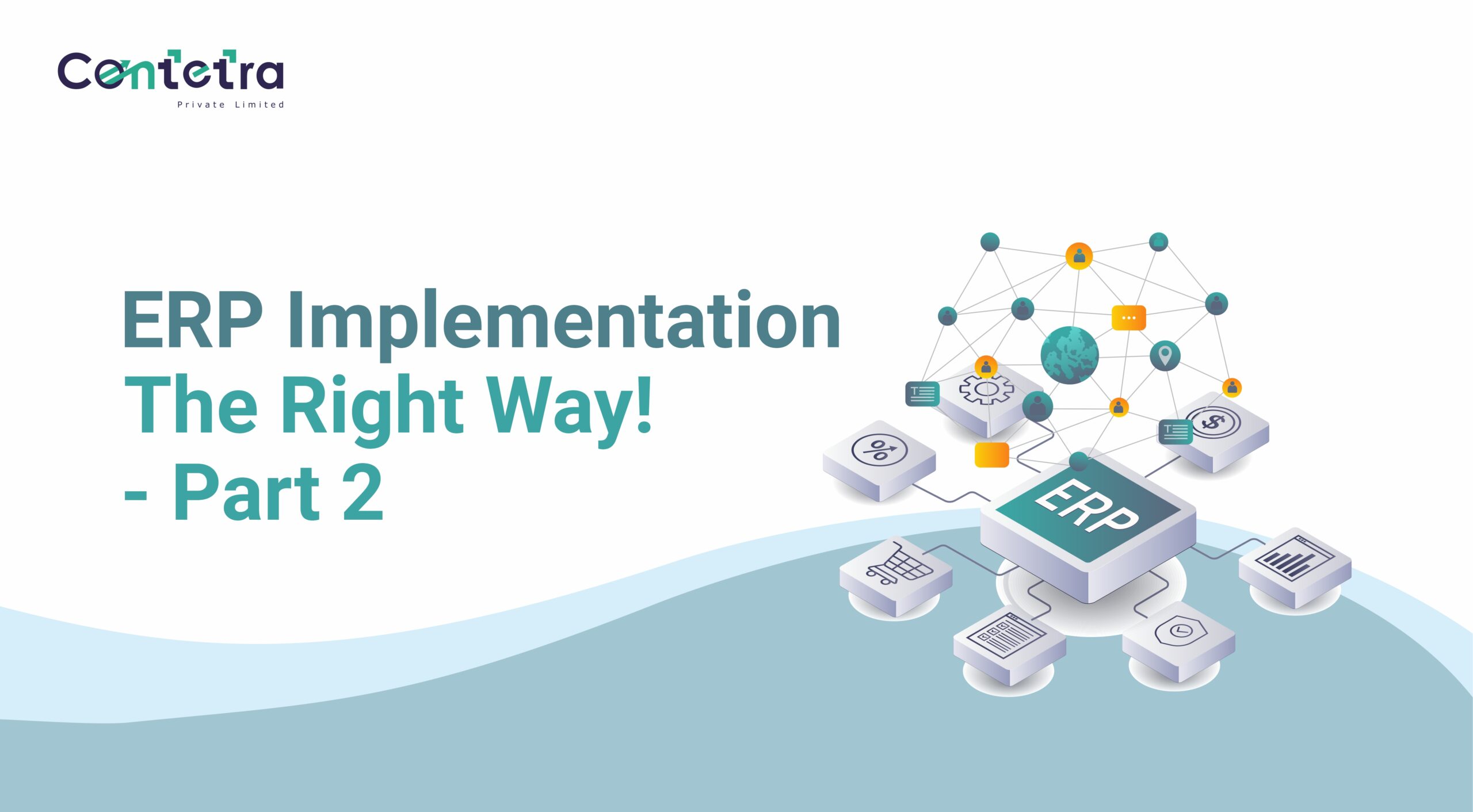In an era where businesses are under increasing pressure to improve operational efficiency, reduce costs, and boost customer satisfaction, adopting an Enterprise Resource Planning (ERP) system can be a game-changer. For many businesses, ERP solutions such as SAP Business One (SAP B1) offer a comprehensive platform to manage everything from finance and inventory to procurement and human resources. However, adopting an ERP system is only half the battle. To truly leverage the power of ERP, businesses need to ensure they are utilizing the system to its full potential. This is where an ERP implementation consultant plays a crucial role, guiding companies through the adoption process and helping them make the most of their ERP investment.
Frolick, a leading company in its sector, found this out the hard way when their SAP B1 system wasn’t being used to its maximum potential, leaving key operational challenges unaddressed. With a more tailored approach, Frolick was able to transform their business processes. Here’s how our ERP implementation solution at Contetra helped them overcome their challenges, enhance efficiency, and set them on a growth trajectory.
The Challenge: Underutilizing SAP B1
Frolick had already invested in SAP B1, a robust ERP system that was designed to centralize all their business functions. However, despite the tool’s potential, Frolick’s team wasn’t able to fully capitalize on its capabilities. The lack of a structured approach meant that some of SAP B1’s powerful features, like the Material Requirements Planning (MRP) module and automated reporting, were not being used effectively. As an ERP functional consultant, we noticed that Frolick was not maximizing their system’s potential to improve key operational areas.
In fact, the company’s ERP system wasn’t fully integrated into the core of their operations. This led to several issues:
- Poor Project Monitoring: Frolick faced difficulty tracking and managing their projects in real-time, leading to delays, missed deadlines, and poor visibility into the status of ongoing work. The lack of automation made manual tracking a cumbersome task, which created inefficiencies and potential for human error.
- Inventory Issues: One of the biggest challenges was inventory management. With inaccurate data on stock levels and procurement requirements, Frolick was often stuck in the cycle of overstocking or running out of stock, leading to missed sales opportunities or excessive holding costs.
- Disjointed Processes: There were too many manual interventions in the processes across different departments. This resulted in delays, inconsistencies, and a lack of cohesion across various operations, from procurement to order fulfillment.
The Contetra Solution: Refining Processes and Automating for Efficiency
When Frolick reached out to Contetra, we understood that the key to unlocking the full potential of their SAP B1 system was to fine-tune their processes and implement a more effective ERP strategy. As an ERP implementation consultant, we knew the importance of aligning business processes with the capabilities of the ERP system. Our approach focused on two core areas: process refinement and automation.
- Process Refinement: Aligning SAP B1 with Business Needs
An ERP system is only as good as the processes it supports. At Contetra, we conducted a comprehensive audit of Frolick’s internal workflows to understand where inefficiencies were occurring. By aligning their business processes with the capabilities of SAP B1, we helped Frolick streamline operations across departments.
- Optimized Project Management: We refined their project management processes by utilizing the project tracking and reporting features within SAP B1. Instead of relying on manual spreadsheets, Frolick now had the ability to monitor the real-time progress of projects, track costs, and identify potential delays before they impacted deadlines.
- Synchronized Procurement and Production: We identified several bottlenecks in their procurement and production cycles. By using SAP B1 to automate inventory and procurement processes, we aligned their purchasing system with actual demand and production schedules. This enabled better forecasting, more accurate lead times, and reduced stockouts.
- Automation: Streamlining Operations and Reducing Manual Intervention
One of the key advantages of ERP systems like SAP B1 is their ability to automate manual tasks. By automating key processes, we helped Frolick reduce errors, improve efficiency, and free up valuable time for employees to focus on higher-value tasks.
- Automated Reporting: Frolick was spending a significant amount of time manually generating reports. With SAP B1’s built-in reporting tools, we automated the reporting process, allowing real-time insights into financials, inventory, and sales. This not only saved time but also improved decision-making by providing accurate, up-to-date data.
- Material Requirements Planning (MRP) Module Implementation: Before our intervention, Frolick was not fully utilizing the MRP module, which is designed to manage production schedules, stock levels, and procurement processes. By implementing this module, we helped Frolick optimize their inventory management and ensure they could meet customer demand without overstocking. As a result, they improved their procurement strategy, reduced waste, and ensured timely delivery of products to customers.
Example: Streamlining Inventory Management
One of the key results of implementing these changes was a marked improvement in inventory management. Prior to the optimization, Frolick experienced significant issues with overstocking and stockouts. For example, in the past, Frolick would frequently order excess raw materials for production, tying up valuable working capital in unsold goods, while other items would fall short, delaying production schedules.
After implementing the MRP module, the system automatically calculated material requirements based on current demand and production schedules. The result? A 25% reduction in excess inventory and a 15% improvement in on-time order fulfillment. These improvements led to a more balanced approach to inventory management, with stock levels now optimized to meet demand without locking up unnecessary capital. This not only improved cash flow but also ensured that Frolick could meet customer demands promptly, further enhancing their customer satisfaction levels.
The Outcome: Empowered Decision-Making and Enhanced Efficiency
The changes made to Frolick’s ERP implementation had a significant impact on the company’s overall operations. The key outcomes included:
- Enhanced Project Visibility and Control: With real-time project tracking, Frolick now had full visibility into the progress of ongoing projects. This allowed project managers to identify issues before they became problems, improving project completion times and customer satisfaction. The ability to closely monitor budgets and schedules meant that Frolick could act proactively rather than reactively, improving both their efficiency and profitability.
- Improved Inventory Management: With the automation of procurement and production processes, Frolick reduced stockouts and overstock situations. This optimization not only improved operational efficiency but also boosted customer satisfaction by ensuring timely delivery of products. The MRP module’s accurate forecasting capabilities reduced waste and helped Frolick save both time and money.
- Streamlined Operations: Automation reduced the need for manual intervention across several key processes, leading to fewer errors, faster processing times, and a more efficient workforce. Staff could now focus on value-added activities rather than spending time on repetitive tasks, enhancing overall productivity.
- Data-Driven Decisions: By automating reporting and providing real-time insights, Frolick’s leadership team had access to accurate, up-to-date data. This enabled them to make more informed, strategic decisions that were backed by reliable data, rather than gut feelings or outdated spreadsheets.
Why ERP Implementation Matters: A Path to Growth
Frolick’s transformation demonstrates the critical importance of optimizing your ERP system. While SAP B1 is a powerful tool, its real potential can only be realized when it’s implemented and configured correctly to suit the specific needs of your business. With the right guidance from an ERP implementation consultant, businesses can unlock the full potential of their ERP system.
For businesses that are struggling to make the most out of their ERP system, working with experts who specialize in ERP optimization can lead to substantial improvements in efficiency, productivity, and profitability. At Contetra, we don’t just implement ERP systems—we refine and optimize them to ensure they align with your business goals.
If your business is facing challenges in fully leveraging your ERP system, consider working with us to unlock its true potential. Through process refinement, automation, and smarter data management, we can help you not only streamline your operations but also make smarter, data-driven decisions that drive growth. An experienced ERP functional consultant can guide you every step of the way, ensuring that your system works hard for you and your business.
In conclusion, the right ERP implementation can make all the difference—whether you’re looking to improve project visibility, streamline inventory management, or enhance overall operational efficiency. At Contetra, we help businesses unlock the power of ERP, driving long-term success and ensuring that your system works harder for you.














